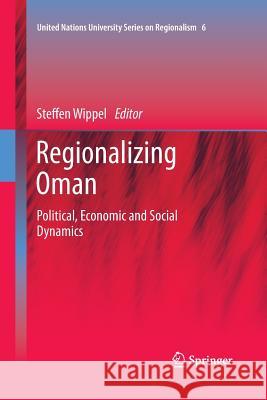Regionalizing Oman: Political, Economic and Social Dynamics » książka
topmenu
Regionalizing Oman: Political, Economic and Social Dynamics
ISBN-13: 9789400796355 / Angielski / Miękka / 2015 / 351 str.
Kategorie BISAC:
Wydawca:
Springer
Język:
Angielski
ISBN-13:
9789400796355
Rok wydania:
2015
Wydanie:
Softcover Repri
Ilość stron:
351
Waga:
0.50 kg
Wymiary:
23.39 x 15.6 x 1.91
Oprawa:
Miękka
Wolumenów:
01











